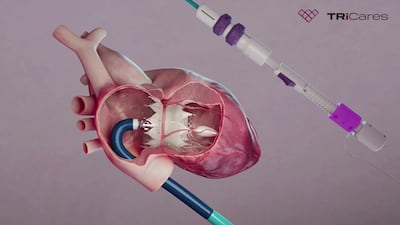Samsara Vision, the New Jersey-based ophthalmology surgery company known as VisionCare until 2020, is sponsoring the US trial of its SING IMT minimally invasive system to treat people with late-stage age-related macular degeneration (AMD).
SING IMT, which stands for “smaller-incision new-generation implantable miniature telescope,” is an “ultra-precision” wide-angle micro-optics device implanted during cataract surgery, the most common type of eye surgery, to improve central...
Read the full article – start your free trial today!
Join thousands of industry professionals who rely on Medtech Insight for daily insights
- Start your 7-day free trial
- Explore trusted news, analysis, and insights
- Access comprehensive global coverage
- Enjoy instant access – no credit card required
Already a subscriber?







